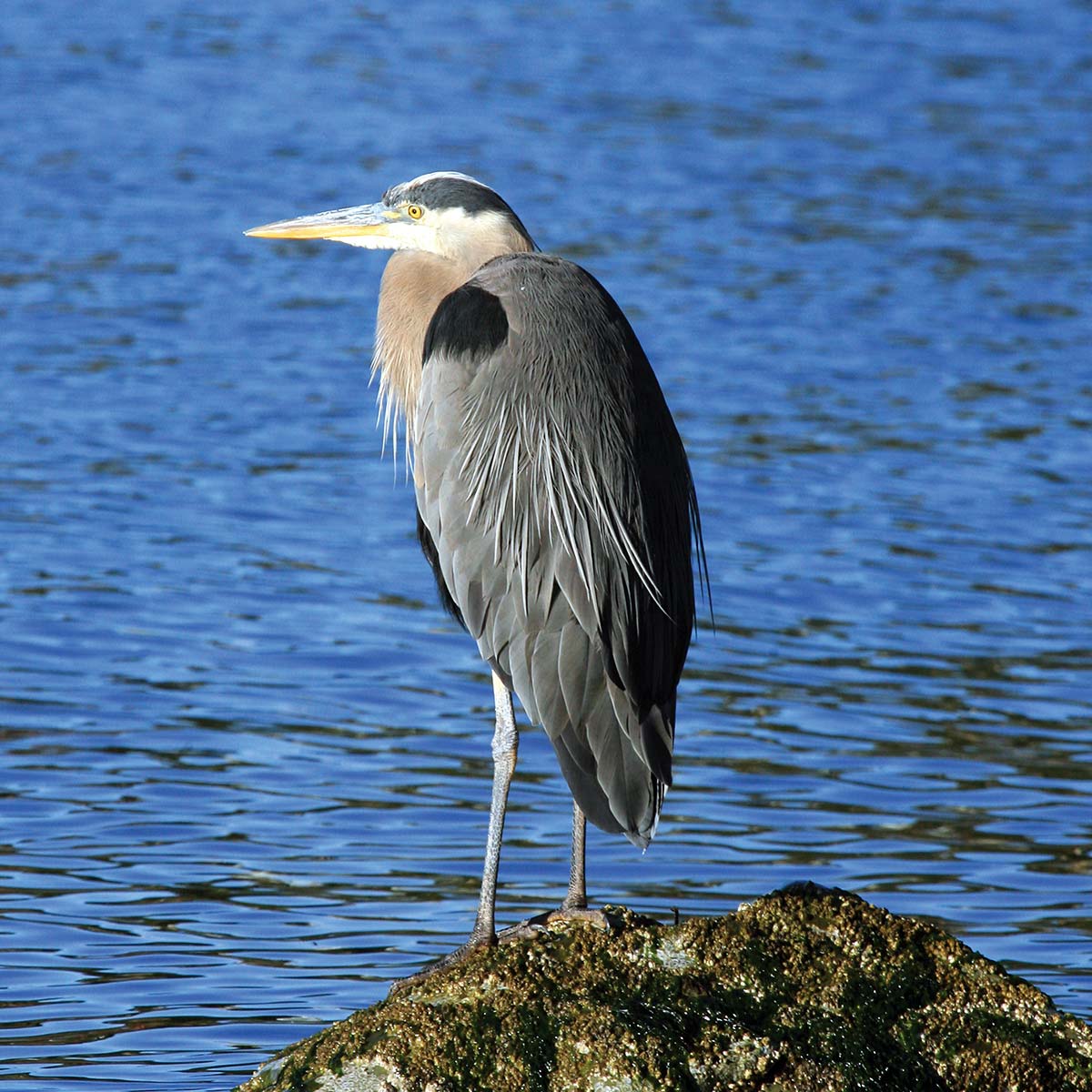Birds of Atlantic Canada
If you’re an avid birder, Atlantic Canada’s bird life may leave you breathless. In addition to hundreds of year-round resident species, the Atlantic migratory route stretches across part of the region, bringing in millions of seasonal visitors for spectacular and sometimes raucous displays.
Among the richest areas is the Bay of Fundy. In July, waterfowl, such as the American black duck and green-winged teal, and shorebirds, including the greater yellowlegs, descend on the Mary’s Point mudflats at Shepody National Wildlife Area. Across Shepody Bay, 100,000 sandpipers stop at the Dorchester Peninsula to grow fat on their favorite food—tiny mud shrimp—before continuing on to South America. With over 300 species, Grand Manan Island is a prime bird-watching site. The show is thickest during September, when migrants arrive in force. Ornithologist and artist John James Audubon visited the island in 1833 and painted the arctic tern, gannet, black guillemot, and razorbill—annual visitors that can still be seen here.

Even greater numbers of seabirds, the region’s densest concentrations, gather on the coastlines of Newfoundland’s Avalon Peninsula, most notably at Cape St. Mary Sea Bird Sanctuary. Species found there include common and arctic terns, kittiwakes, great and double-crested cormorants, Leach’s storm-petrels, razorbills, guillemots, murres, gannets, and 95 percent of North America’s breeding Atlantic puffins.
Each species has found its niche, and each is remarkable in its own way. The black-and-white murre, for example, is an expert diver that uses its wings as flippers to swim through the water chasing fish. This behavior can sometimes get the birds caught up with the fish in nets. The murre’s cousin, the comical-looking Atlantic puffin, borrows the penguin’s tuxedo markings but is nicknamed the “sea parrot” for its distinctive triangular red-and-yellow bill. Puffins make Swiss cheese of the land, as they nest in burrows they’ve either dug out themselves or inherited from predecessors.
In Labrador, ruffled and spruce grouse, woodpeckers, ravens, jays, chickadees, nuthatches, and ptarmigans are a few of the inland birds you may spot.
In New Brunswick’s interior, crossbills, varied woodpecker species, boreal chickadees, and gray jays nest in the spruce and fir forests. Ibises, herons, and snowy egrets wade among lagoons and marshes. Among Nova Scotia’s 300 or so bird species, the best known is the bald eagle. About 250 pairs nest in the province, concentrated on Cape Breton—the second-largest population on North America’s east coast, after Florida. The season for eagle watching is July and August. Other birds of prey include red-tailed, broad-winged, and other hawks; owls; and the gyrfalcon in Newfoundland and Labrador. Peregrine falcons were reintroduced to Fundy National Park in 1982. They nest in seaside cliffs and attack their prey in “stoops,” kamikaze dives in which the falcon can reach speeds of over 300 kilometers per hour.
The noisy blue jay, Prince Edward Island’s official provincial bird, is at home throughout the province, but the island’s showiest species is the enormous, stately great blue heron, which summers there from May to early August. The rare piping plover may be seen (but not disturbed) on the island’s national park beaches, and arctic terns nest along the coast near Murray Harbour.